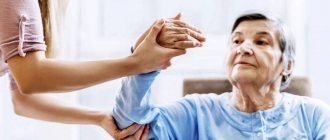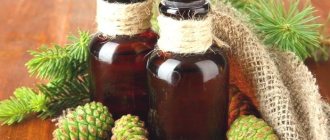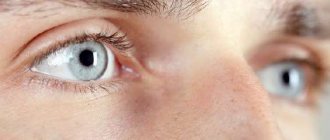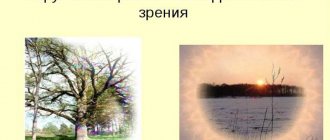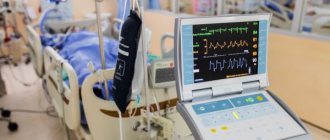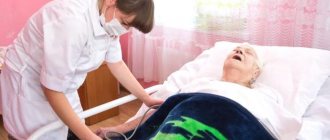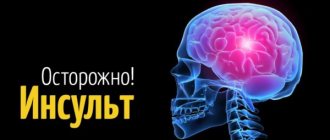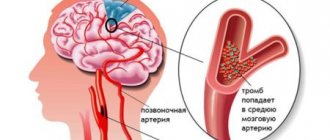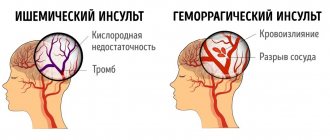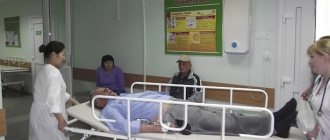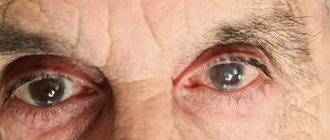Author's rating
Author of the article
Smirnova Olga Leonidovna
Neurologist, education: First Moscow State Medical University named after I.M. Sechenov. Work experience 20 years.
Articles written
94
Stroke is a disease that, according to statistics, more often affects older people. This diagnosis is made when a person’s blood circulation to the brain is disrupted for various reasons.
The pathology that leads a person to this condition is called cerebrovascular. In addition to problems with speech, a feeling of numbness in the limbs, and sometimes paralysis, a person suffers from the fact that he quickly forgets everything. How to restore memory after a stroke, and is it even possible?
After a stroke, a person may lose memory. To get rid of this pathology and become a normal member of society, you need to follow all the advice of your doctor.
What is memory
A person’s ability to think, read and write is a neurochemical process of the cortex of both hemispheres of the brain and the cerebellum. Memory is the ability of the brain to record and retain necessary or delete unnecessary information.
The process of memorization, from a neurophysiological point of view, means the formation of new connections between brain neurons. When a person remembers something, these connections are activated and electrical impulses arise. When acquired knowledge is not used for a long time, the connections between nerve cells are destroyed.
This is interesting! The main center responsible for verbal information is located in the frontal lobe of the brain. But information associated with conscious activity is recorded in different parts of the brain. Thus, memory is a network of neural connections that entangles the cerebral cortex.
Why does a stroke cause complications?
The brain consists of 2 hemispheres, each of which is responsible for its assigned role. For example, thanks to the right hemisphere:
- emotions are controlled;
- imagination develops;
- information received through the organs of vision is processed.
What is the left hemisphere doing at this time? It:
- responsible for logic;
- helps to form cause-and-effect relationships between various phenomena;
- enables a person to correctly determine the sequence of events and phenomena.
If the brain is healthy, then both hemispheres work perfectly in a common mode, complementing each other. For normal functioning, they both equally need a supply of blood and nutrients.
The human brain contains a huge number of neurons and connections between them. When blood circulation in the brain is disrupted, some connections are broken, and the parts of the brain responsible for certain functions cannot cope with their implementation, and the person suffers from this.
Why does memory disappear? During thought processes, signals pass through the connections of neurons, and when they are absent, a person loses the ability to remember something or reason logically or draw conclusions.
If a person is diagnosed with a stroke, it means that some part of the brain is not receiving enough oxygen.
Memory loss during a stroke is not uncommon, so you need to be prepared for anything. It may be necessary to rehabilitate the patient for a long time. If you do everything following the advice of a specialist, your memory will definitely return.
Types of memory
Depending on how long information is stored in the cortex, the ability to remember and store is divided into three types:
- Short-term memory is retained for several minutes when superficially reading, listening, or viewing new information. Knowledge is soon forgotten, but if you return to it, the bridges between neurons are firmly fixed in the cortex.
- Long-term memory is formed from short-term repetitions. In this case, information is stored for a long time in unlimited quantities.
- RAM is used for short-term work. After completing the task, knowledge is erased due to lack of need in the present and future tense.
As a result of cerebral circulation disorders, all types of memory are affected. The worst thing is when there is a loss of short-term memory - the basis of long-term information. The patient remembers what happened before the stroke, but it is not possible to create a chain of new knowledge. If long-term information is destroyed during illness, the patient does not remember people and events that preceded the stroke. Typically, older people experience weakened memory, and it is difficult to assimilate new knowledge.
Folk recipes
You can speed up the recovery process at home using folk remedies. There are the following recipes for this:
- Grind 2 lemons and 2 oranges with peel, add a couple of tablespoons of honey and leave to steep for a day. After this, put it in the refrigerator. Drink 1-2 tablespoons three times a day. You can also drink a small spoon of lemon juice every morning, after mixing it with sugar and a clove of garlic.
- Add 0.5 liters of hawthorn tincture to 300 g of walnut partitions and leave to infuse for a couple of weeks. Take a teaspoon three times a day. It is better to do this before eating. The course of use of this product is 3 weeks.
- Effective folk remedies include the following infusion: add a glass of water to 1 dessert spoon, leave for a couple of hours and take a couple of tablespoons three times a day. It is recommended to do this for 3 weeks. After a break of 10 days, it is recommended to continue the course of use of the product.
- To prepare the decoction, you need to chop a tablespoon of rowan branches and bark, add 1 glass of water and cook for 10 minutes. Then leave for a couple of hours and mix with water to obtain the original volume. Take a third of a glass per day. The course of therapy is 3 weeks.
- You can also prepare an infusion of half a glass of dried sage herb. It needs to be filled with 250 ml of boiling water and left to infuse for 8 hours. Take a small spoon three times a day with milk.
- To stimulate the restoration of damaged tissue and reduce cholesterol, it is recommended to use folk remedies such as pollen. It should be taken a small spoon three times a day. It is better to do this on an empty stomach.
- To restore cells damaged after a stroke and get rid of blood clots, treatment with folk remedies such as mumiyo and aloe juice is suitable. To prepare a healing composition, it is recommended to mix 5 g of mumiyo with 150 ml of juice.
You need to take the resulting mixture 1 teaspoon in the morning on an empty stomach. The use of this remedy is continued for 10 days. Then a break is taken for 4 days and the course of therapy is repeated. Using similar folk remedies, it is recommended to drink 20-30 drops of propolis tincture. Restoring memory after a brain stroke is a very complex and time-consuming process. For it to be as successful as possible, it is important to strictly follow all medical recommendations, take medications and perform special exercises.
Principles of memory rehabilitation
60% of patients suffer from impaired cognitive function of the brain after a stroke. Mental abnormalities, memory impairment, and aphasia are associated with cerebral ischemia. These signs appear in the first three months after a vascular accident.
Early memory restoration can begin from the first week of hospital stay, if the patient has clear consciousness and a stable condition. The neurologist is assisted by a clinical psychologist and speech therapist. Typically, rehabilitation begins in the second or third week after a stroke.
The neurologist prescribes drug therapy to restore cerebral blood flow. Depression also negatively affects the patient's mental abilities and therefore needs correction.
Advice! Physical activity and special exercises for memory training are an important point for restoring the thinking process.
Not only exercise therapy and massage have a stimulating effect on neurons, but also the development of fine motor skills of the hands. A person’s mental abilities are restored from 2–3 months to a year.
Reasons for violation
The human brain consists of two hemispheres. The right is responsible for the functioning of the internal organs on the left side of the body, as well as for the perception of emotional experiences. The left hemisphere is responsible for the functioning of the internal organs located on the right, as well as for analytical thinking.
When a stroke occurs, a cerebral artery is blocked by a blood clot, therefore, blood circulation is impaired and the nutrition of the brain becomes worse. In this case, the patient experiences disturbances in the speech apparatus, memory, and motor function (how to restore motor function?).
Drug therapy
The degree of cerebrovascular accident depends on the location and size of the lesion and the timeliness of treatment. The sooner restoration measures are started, the greater the chance of regaining memory. Most patients are able to recover partial loss of mental abilities. During the rehabilitation period, vasodilator drugs are used:
- Piracetam (Nootropil), by expanding cerebral vessels, increases blood circulation in the cerebral cortex. The mechanism of action is to facilitate the transmission of impulses between neurons. In addition, the drug reduces blood viscosity and prevents the formation of blood clots. Nootropil prevents vascular spasm, strengthening their walls. After a course of treatment, concentration increases, memory improves, and learning becomes easier.
- Phenotropil increases blood circulation in the cerebral cortex. According to the mechanism of action, it promotes the activation of neurons, increases the speed of transmission of nerve impulses, and improves connections between the hemispheres.
- Aminalon contains gamma-aminobutyric or hydroxybutyric acid, which restores the metabolic processes of the cortex. Promotes the absorption of glucose by brain tissue, enhances metabolism, facilitating the transmission of impulses between neurons. In addition, the medicine stimulates the psycho-emotional state, reducing depression. In addition, it helps restore limb movement and speech abilities. The drug also stabilizes blood pressure and reduces blood glucose levels. The complex effect of the drug helps restore memory loss.
- Glycine improves metabolic processes in the brain. It has an antidepressant effect and reduces nervous tension. As a result, the pills reduce internal aggression. A person becomes less conflicted and more sociable. In patients after cerebrovascular accident, Glycine reduces depression and normalizes sleep.
Important! Drug therapy after a stroke is used for many months. Some patients take nootropics for life.
Medicines restore memory in combination with physical activity and special exercises for memory training.
Learning poetry
As a result of a stroke, many vital functions can be disrupted. Among them, memory is almost in first place. After all, when a person cannot restore the chain of events, remember a specific person or his actions done a minute ago, this greatly worsens the quality of life. A person feels flawed, inferior and understands that something needs to be done about it.
Memory restoration after a stroke is one of the main tasks of the rehabilitation period. You should know that the patient cannot cope with such a problem on his own. He needs the help and support of his family and friends. What is the role of these people? They are required to:
- Love;
- attention;
- patience;
- persistence;
- persuasiveness.
These qualities will definitely help a sick person regain his memory. There is a whole range of exercises that can make your brain work. One of the effective exercises is finger games.
They consist in the fact that the patient simultaneously with the process of speaking makes movements with his fingers (after all, even the development of cognitive (mental) functions of young children depends on fine motor skills).
For example, the patient can be asked to read a children's (or his favorite) poem and during this process perform the following manipulations:
- bend your fingers rhythmically;
- clap;
- clench fists with one or both hands;
- rub your palms.
What is the result? When a person performs certain movements in a certain sequence and rhythm, he is focused and attentive. The gestures he makes help restore memory. For any person, especially those who have lost their memory, memorizing poems and learning foreign languages is considered good training.
For people who have suffered a stroke, it is very important to train all thought processes, including speech and memory. But for them everything happens much longer than for healthy people, because some connections between brain neurons are lost. Therefore, in the process of memory recovery, gradualness and unhurriedness are important.
You can learn at least one line of a poem a day, and if possible, then one stanza at a time. Memory is restored gradually. There's no need to rush. This is precisely the important mission of the people around us - not to be irritated, not to show impatience, but to help the patient recover.
Physical activity
Physical activity helps improve thinking abilities during the rehabilitation period. Any movement stimulates receptors, and they, in turn, activate neural memory connections. Regular exercise increases the functioning of healthy organs, compensating for lost function.
Methods used in the rehabilitation center:
- physical therapy is the main method of the recovery period,
- massage,
- breathing exercises,
- occupational treatment,
- manual therapy,
- physiotherapy.
In the initial period of recovery, patients are treated with one of the exercise therapy techniques called kinesiotherapy, which means treatment with body position. Under the supervision of a neurologist, the patient is given different positions of the body and limbs. This method of treatment is carried out using special equipment in a rehabilitation center.
Rules for recovery after a stroke
Rehabilitation is a rather complex and time-consuming process. During this period, it is very important to follow certain rules:
- Create a favorable emotional atmosphere in a person’s place of residence. If the patient feels negative or dismissive, the healing process is unlikely to be successful.
- Stick to your daily routine. It is very important for people with this diagnosis to create the right daily routine. At approximately 20:00 a person should go to bed, since it is at this time that the body rests best. Regular walks in the fresh air are very beneficial. Thanks to this, it will be possible to improve the thought process and restore memory faster.
- Drink enough quality water. If this is not done, recovery will not be effective enough.
Exercises
The patient recovers only with the help of exercises. Without them, no medicine will help.
You need to start with the simplest exercises. Day after day, more and more information is accumulated.
Repeat simple questions several times throughout the day: what is the name of this or that person, animal, what is the name of an object, what year, month, day, season is it now.
Important! Be patient. Encourage the patient. Don't get angry if things don't work out.
Visual exercises develop the imagination well. To do this, show bright, simple pictures, drawings, photographs. Let the patient study them carefully for 10-15 minutes. Then ask them to tell you what was depicted.
Associations. Show different objects and ask what they are associated with. The first few times you can give a hint, then the patient should try to remember something of his own. For example, it will be a personal item that was previously very loved. Let's say a mug, watch, pen, keychain and the like.
Shared reading. Read the patient his favorite books, then ask him to retell what was read. You should not choose news feeds or crime chronicles to read. You can take a popular science article, notes about nature, animals, travel.
The game of cities trains very well; some people have in their heads images of places that they have ever personally visited or were interested in. For some, memories from school lessons or even geographical maps come to mind.
Memorization. This is a necessary exercise. It will prepare you for further independent life. Write a list of last names, names of immediate family and friends, and their phone numbers. It’s good to learn this data according to your mood, it’s better remembered. In the meantime, it’s good to learn short poems and try to pronounce tongue twisters.
Solving crosswords and puzzles. This is great for developing logic. You can start with small children's crossword puzzles, gradually moving on to more complex ones, depending on your success. It is important that the result is visible to the patient himself. All filled in guessed fields have a positive psychological effect.
Write down. If the patient does not have problems with the limbs or paralysis, then keep a notebook in which you write down all the information that he considers necessary to remember.
We invite you to watch an interesting video on the topic:
How to improve memory using folk remedies
Folk remedies can be an addition to drug therapy and exercises, but you should consult your doctor about their use. Alternative medicine recipes only improve the patient’s overall well-being. The following remedies are effective in this regard:
- You need to squeeze the juice out of the dandelion. It is consumed 25 ml before each meal.
- Brew a cup of green oat sprouts with 5 cups of boiling water. Boil the product and cook until the volume of liquid is reduced by half. Add 4 tsp. honey Pour in milk so that the volume of the broth is again about 5 glasses. Bring to a boil again, then remove from heat. Use the entire decoction throughout the day.
- About 2-4 tbsp. l. Pour boiling water over crushed rowan bark. Pour the liquid into a saucepan, put on fire, simmer for 10 minutes. Let the product brew for 6 hours, strain. Drink warm, 1 tbsp. l. up to 3 times a day.
Basic principles of restoration activities
Recovery will be effective only if the doctor and the patient himself, as well as his relatives, adhere to a number of simple principles:
- What is required, as already mentioned, is a systematic approach to the rehabilitation of the patient. It is necessary to use specialized medications, also select the right set of training and regularly perform it together with the victim.
- A step-by-step restoration of cognitive functions is necessary. No one can predict in advance what the rehabilitation period will be in a particular case. You need to be patient and systematically perform sets of exercises, starting with simple tasks and moving on to more complex ones. Starting abruptly with something difficult can tire a person. The result will be a worsening of the condition and a “rollback” back.
- It is important that the patient constantly feels supported by loved ones. The emotional background plays a huge role in rehabilitation and increases its speed.
Only by adhering to these rules can you achieve success in therapy.
